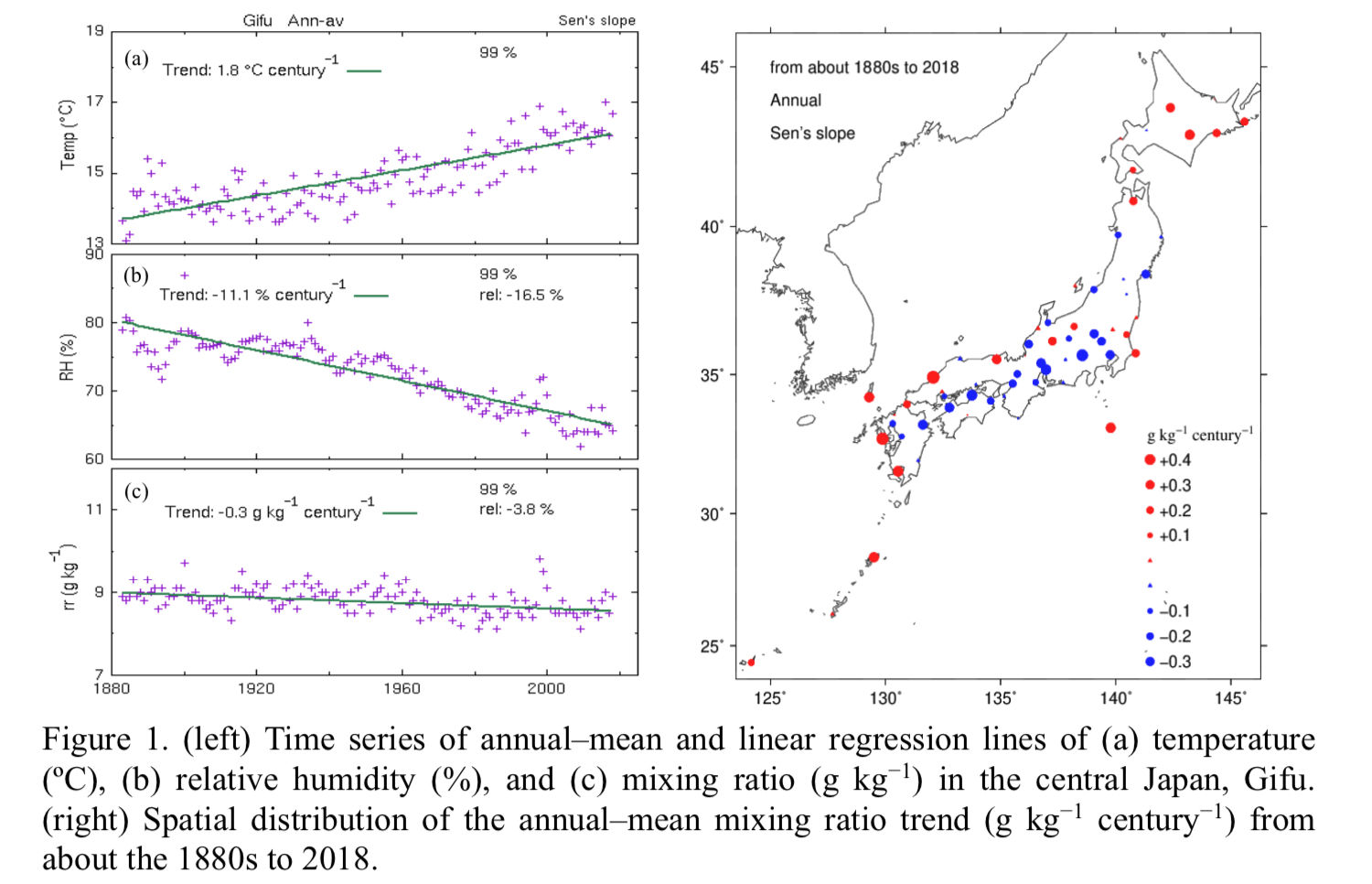Graphical Abstract
Shibata, K., and A. Sai, 2021: Long-term trends and variations in surface humidity and temperature in the Japanese archipelago over 100 years from 1880s. J. Meteor. Soc. Japan, 99, 402-422.
https://doi.org/10.2151/jmsj.2021-019
Early Online Release
Graphical Abstract
Published
Plain Language Summary: The surface observation data in Japan, beginning around the 1880s, are analyzed focusing on the long–term trends and variations in humidity and temperature. It is found that the annual–mean temperature trend exhibits statistically significant warming of 1.0°C–2.5°C century-1, while the annual–mean relative humidity shows significantly decreasing trend of −2% to −12% century-1. On the other hand, the annual–mean mixing ratio trend displays a different spatial distribution compared to the temperature or relative humidity trend. In this study, three types of trends exist: significantly positive and negative values, and virtually zero. Significantly negative trends of about −0.2 to −0.3 g kg-1 century-1 are located approximately in the Pacific side of Honshu from the middle Tohoku through Shikoku to the eastern Kyushu. Significantly positive trends of about 0.2 to 0.4 g kg-1 century-1 are observed over Hokkaido, the western Japan along Sea of Japan, the western Kyushu, and the remote islands including Okinawa.
Highlights:
- Empirical orthogonal function (EOF) analysis indicates that the linear trends in the annual–mean temperature and relative humidity can be almost explained by the nearly uniform persistent warming and drying of EOF–1 components.
- For the annual–mean mixing ratio, EOF–2 is almost identical with the linear trend component, although the fraction of EOF–2 (14%) is much smaller than that of EOF–1 (49%).
- In recent years from 1960 to 2018 the mixing ratio and temperature trends are very different from those in the longer period from the 1880s. The mixing ratio trend and the temperature trend increase on average from 0.0 to 0.5 g kg-1 century-1 and from 1.5°C to 2.5°C century-1, respectively.







